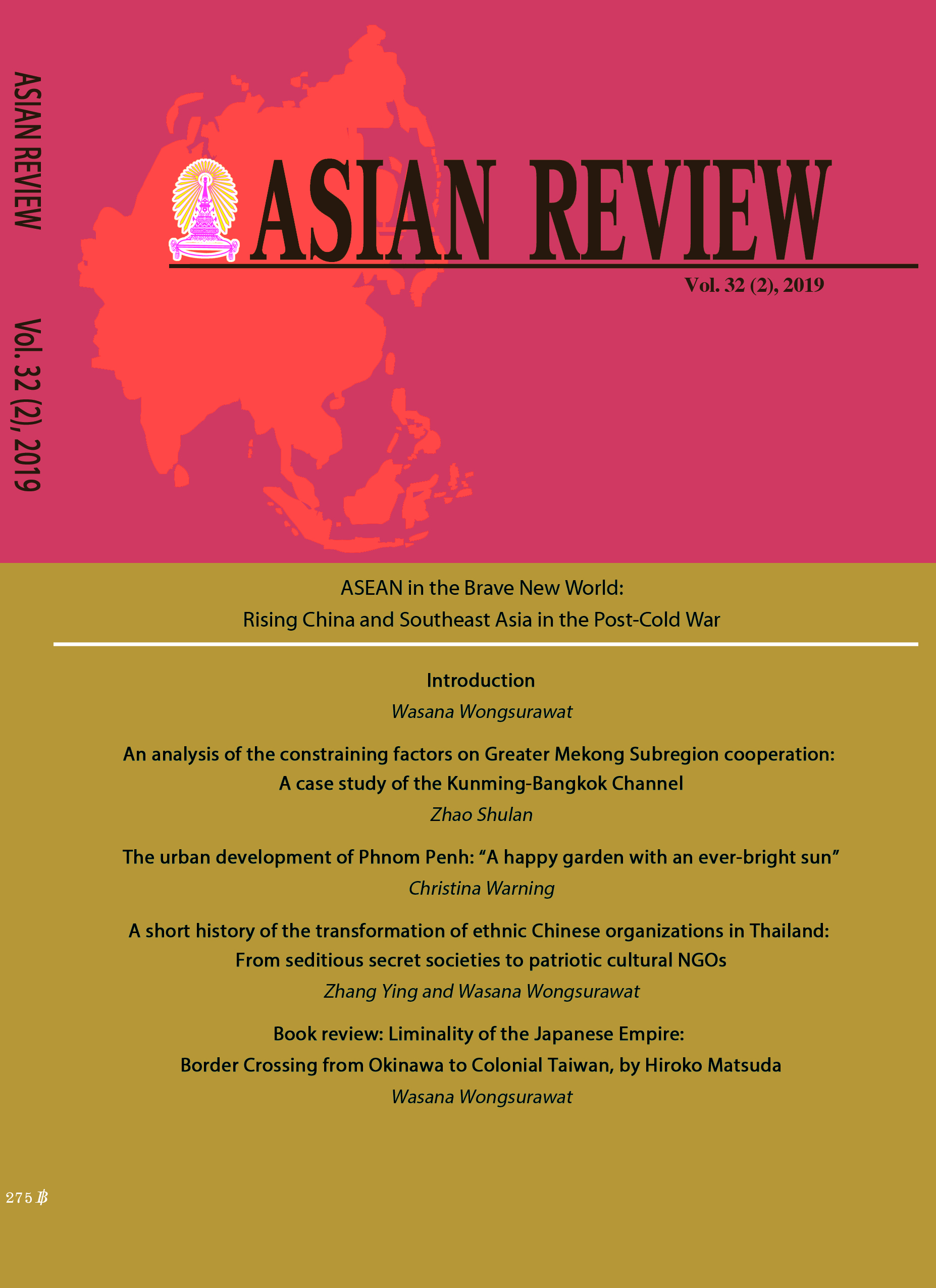The urban development of Phnom Penh: “A happy garden with an ever-bright sun”
Keywords:
Urban development, Urban development, Phnom Penh, Phnom Penh, forced evictions, forced evictions, privatization of urban spaces, privatization of urban spacesAbstract
Phnom Penh has been one of Southeast Asia’s fastest growing cities. Throughout the past decades the urban development processes throughout Southeast Asia have led to evictions, many of which have been violent. In many countries, evictions and the violent removal of entire communities has become a defining feature of modern urban development. Phnom Penh is no exception. This paper provides a condensed account of some of the essential urban policy decisions over the past four decades that help to understand the conflicts and fault lines that have shaped the contemporary urban landscape of Phnom Penh. Using the example of an innercity community, which was home to many artists with close connections to the Ministry of Culture and Fine Arts, the article shows how entire urban spaces in Phnom Penh have been re-designed in line with the needs of an increasingly inter-connected and wealthy political and economic elite.
References
bartlett/development/sites/bartlett/files/migrated-files/WP139_Afia_Afenah_Internet_copy_0.pdf
Becker, Elizabeth. 1998. When the War was Over: Cambodia and the Khmer Rouge Revolution. New York: Public Affairs.
Blancot, Christiane. 1997. La Reconstruction. Phnom Penh: Développement urbain et patrimoine, Ministère de la Culture, Départment des Affaires Internationales, Atelier Parisien d’Urbanisme.
Chamkarmorn, Khan. 2004. Report on the results of the organization of the on-site development of Dey Krahom communities. Phnom Penh: Phnom Penh Municipality, Khan Chamkarmorn Office.
Corfield, Justin and Laura Summers. 2003. Historical Dictionary of Cambodia. Oxford: Scarecrow Press.
Doyle, Kevin. 2014. “Vietnam’s forgotten Cambodian war.” BBC News, September 14. https://www.bbc.com/news/world-asia-29106034.
Gruss, Jan Frederik. 2007. Resettlements in Developing Countries – A Case Study on “Social Capital” in Phnom Penh/Cambodia. Bamberg: Otto-Friedrich University.
Kolnberger, Thomas. 2014. Zwischen Planung und spontaner Ordnung – Stadtentwicklung von Phnom Penh 1860 bis 2010. Austria: Universität Wien, Institut für Geographie und Regionalforschung, Abhandlungen zur Geographie und Regionalforschung.
Menzies, Nick, Sou Ketya, and Daniel Adler. 2008. Land Development and Conflict: Urban and Peri-Urban Phnom Penh. Phnom Penh: Center for Advanced Study,
World Bank (Justice for the Poor Program).
Molyvann, Vann. 2003. Modern Khmer Cities. Phnom Penh: Reyum Publishing. PA AA, MfAA, VS61
Phnom Penh Capital Hall. 2012. The Phnom Penh Urban Poor Assessment: A Baseline Survey on the Social and Economic Situations and Capacity of Existing Services in Urban Poor Communities. Phnom Penh: Transparency International Cambodia. http://ticambodia.org/library/wp-content/files_mf/1437981364PhnomPenhUrbanPoor_Eng_2012.pdf.
Little, Harriet Fitch and Vandy Muong. 2015. “The Day the Music Stopped.” The Phnom Penh Post, April 10. Accessed May 16, 2017. http://www.phnompenhpost.com/post-weekend/day-music-stopped.
UN-HABITAT Cambodia. 2003. “Slum Upgrading in Cambodia.” Accessed November 4, 2014. http://ww2.unhabitat.org/cambodia.asp.
World Bank. 2015. East Asia’s Changing Urban Landscape: Measuring a Decade of Spatial
Growth. Accessed December 20, 2016. https://www.worldbank.org/content/dam/Worldbank/ Publications/Urban%20Development/EAP_Urban_Expansion_full_report_web.pdf.
Yao, Ty. 1997. Le Retour et la Réorganisation de la Vie Urbaine. Phnom Penh: Développement urbain et patrimoine, Ministère de la Culture, Départment des Affaires Internationales, Atelier Parisien d’Urbanisme.
Downloads
Published
How to Cite
Issue
Section
License
Published articles are under the copyright of the Instiute of Asian Studies, Chulalongkorn University. Partially or totally publication of an article elsewhere is possible only after the consent from the editors.







